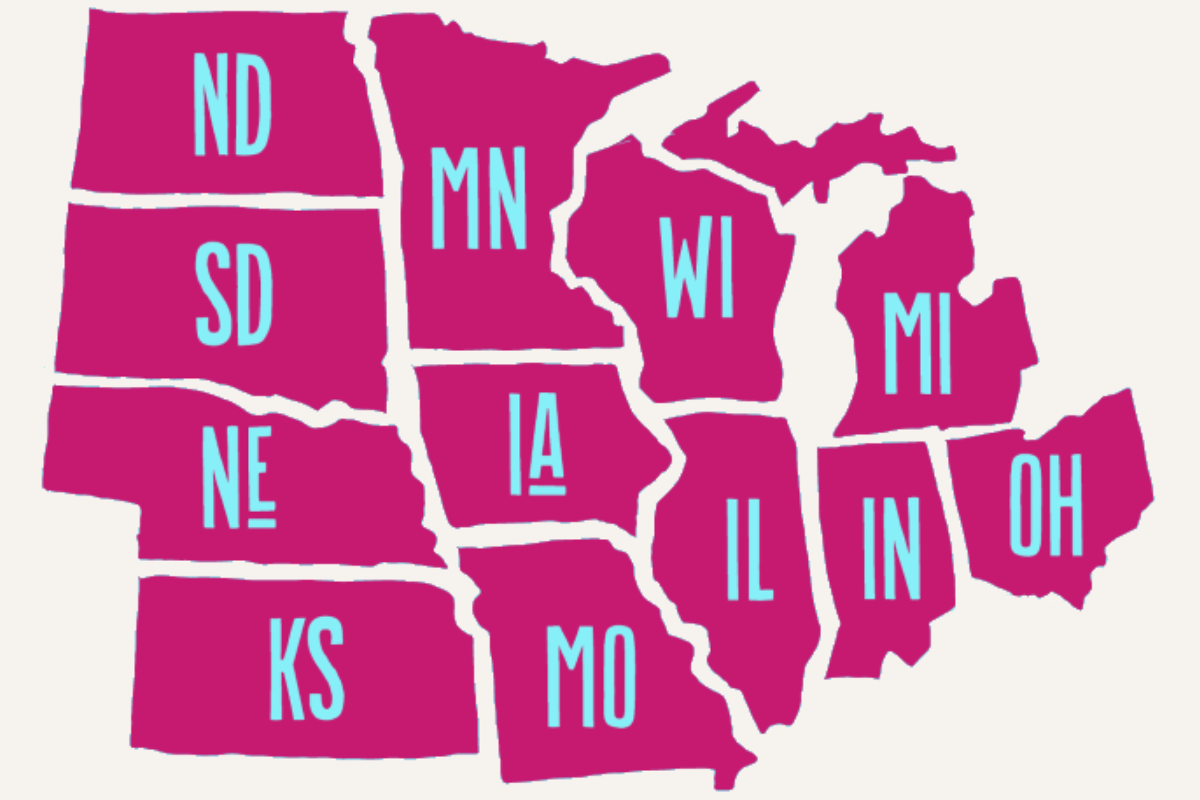How Do YOU Define the Midwest?
When you think of the Midwest, you may picture Michigan’s Great Lakes, Chicago’s Willis Tower, or the Mall of America in Minneapolis. You may also picture heaping plates of cheese curds, Chicago-style pizza, paczki, or Yooper pasties.
But Kansas City BBQ and Philly cheesesteaks? Mount Rushmore and the Gateway Arch? Those could be considered part of the Midwest, too… depending on how you define “Midwest.”
While there may be some grumbling among residents of traditionally “Midwest” states, the Midwest seems to have no single definition, and its boundaries seem to be continuously expanding.
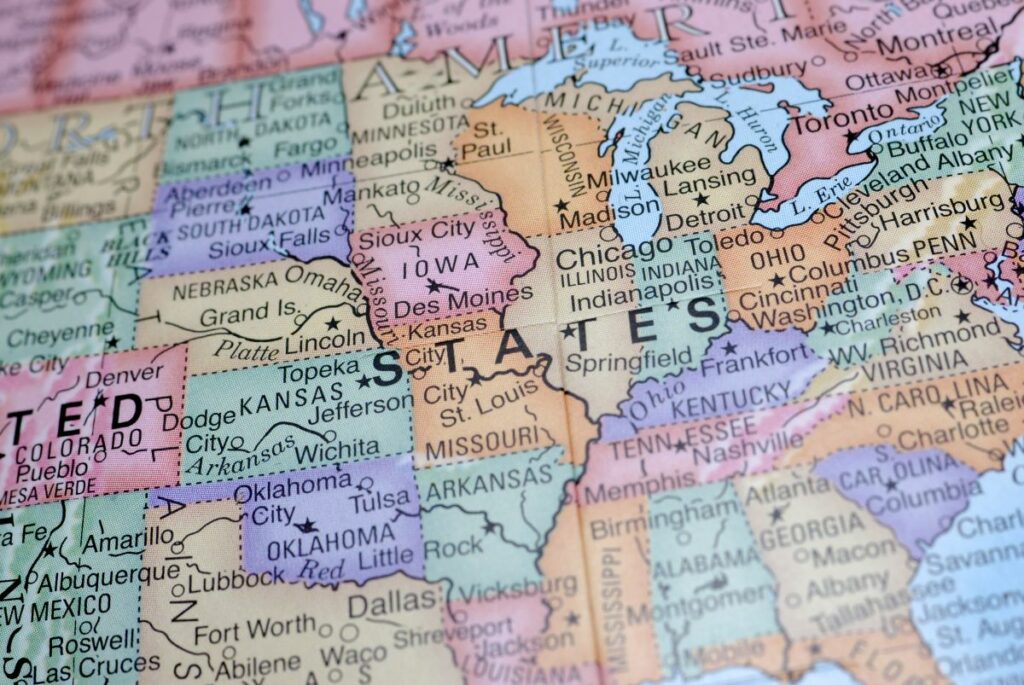
So Where is the Midwest?
So where exactly is the Midwest? Well…that depends on who you ask and the results are fuzzy at best.
A resident of Michigan or Minnesota may consider the Midwest to be the states that touch the Great Lakes (sans Lake Ontario) — Michigan, Ohio, Indiana, Minnesota, and Illinois — the so-called Great Lakes region.
The U.S. Census Bureau’s definition of the Midwest includes Indiana, Iowa, Illinois, Kansas, Michigan, Minnesota, Missouri, Nebraska, North Dakota, Ohio, South Dakota, and Wisconsin. That puts the population of the Midwest at nearly 70 million people.
The Bureau divides the Midwest into two divisions: The East North Central Division includes Illinois, Indiana, Michigan, Ohio, and Wisconsin. The West North Central Division includes Iowa, Kansas, Minnesota, Missouri, North Dakota, Nebraska, and South Dakota. These groupings include states considered to be in the Great Lakes region and Great Plains region.
The National Park Service takes things a step further and adds Arkansas to that grouping, making the Midwest a baker’s dozen states.
But wait…there’s more.
A recent survey from Middle West Review shows that nearly half the country — including residents in Montana, Idaho, Wyoming, Arkansas, Tennessee, and Pennsylvania — consider themselves part of the Midwest.
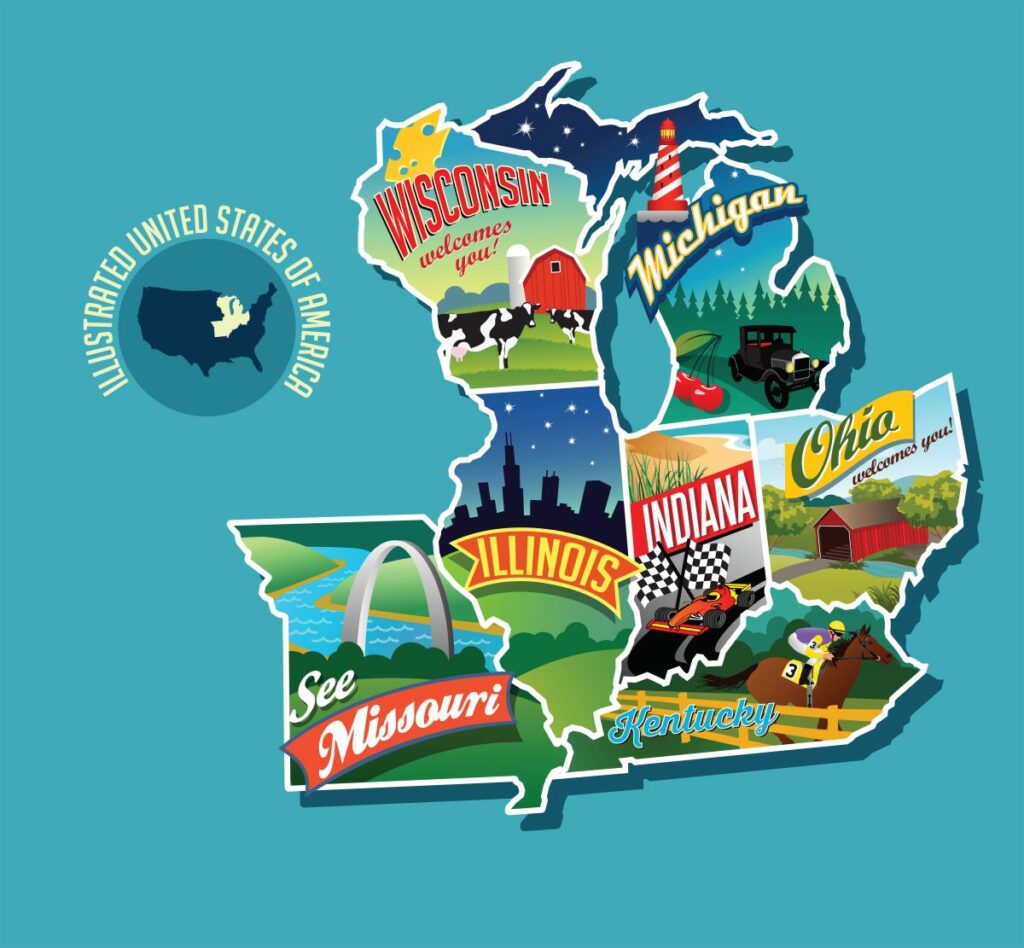
A Definitive Answer
We’ll let you argue amongst yourselves, but for the sake of simplicity, we’re going to define the Midwest in two groups…
1. The Core
These states leave no question in our minds as to their place in the Midwest:
- Minnesota
- Wisconsin
- Michigan
- Ohio
- Indiana
- Illinois
- Iowa
- Missouri
2. The Outliers
While these states are left out of some Midwest groupings, we’re going to claim them as ours:
- North Dakota
- South Dakota
- Nebraska
- Kansas
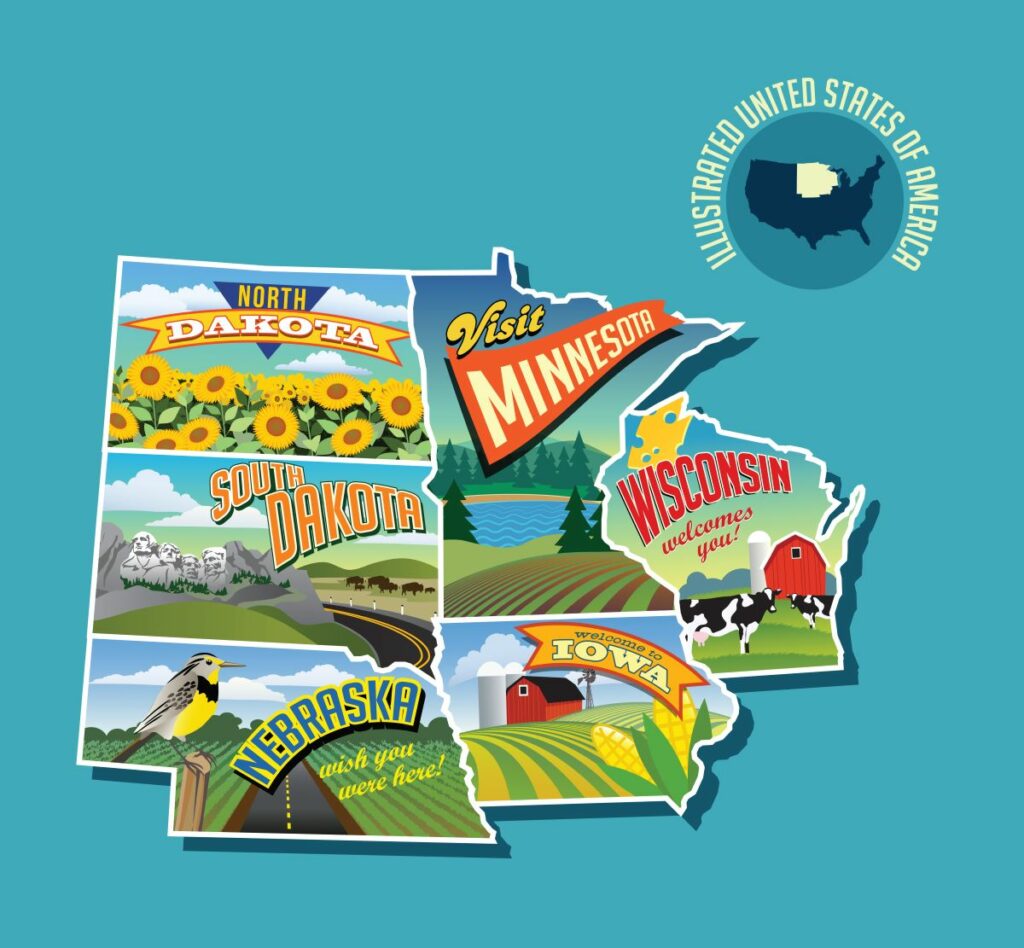
What’s Not To Love About the Midwest?
While some of the results might raise a few eyebrows, it’s not hard to understand why so many states would want to have even a little bit of that Midwest sheen.
That’s because the Midwest offers a slower pace of life, its residents are down-to-earth and friendly, the sense of community is strong, and the overall lifestyle is stress-free.
Residents also love the Midwest because they get the best of both worlds — a little bit of city and a little bit of country. They can even live in the country, just outside the city for fun and easy daytrips.
If that wasn’t enough, the Midwest is known for its hot, humid summers and cold, snowy winters; perfect for fun on the water in the summer and fun on snowmobile trails, sledding hills, and snow tube runs in the winter.
History of the “Midwest”
Over time, the definition of Midwest has changed significantly. So perhaps it’s not as big of a surprise that states traditionally considered part of other regions are at least in the Midwest conversation.
Native American tribes first inhabited the Midwest — which was later explored by Europeans, including Jacques Marquette and Louis Jolliet. The region was under British control before the Revolutionary War and later became the Northwest Territory in 1787.
As the settlement of the region expanded, Ohio (1803) achieved statehood, followed by Indiana (1816), Illinois (1818), Michigan (1837), Wisconsin (1848), and Minnesota (1858). In the 19th and 20th centuries, the Midwest became an industrial center and transportation hub, fueled by abundant natural resources.
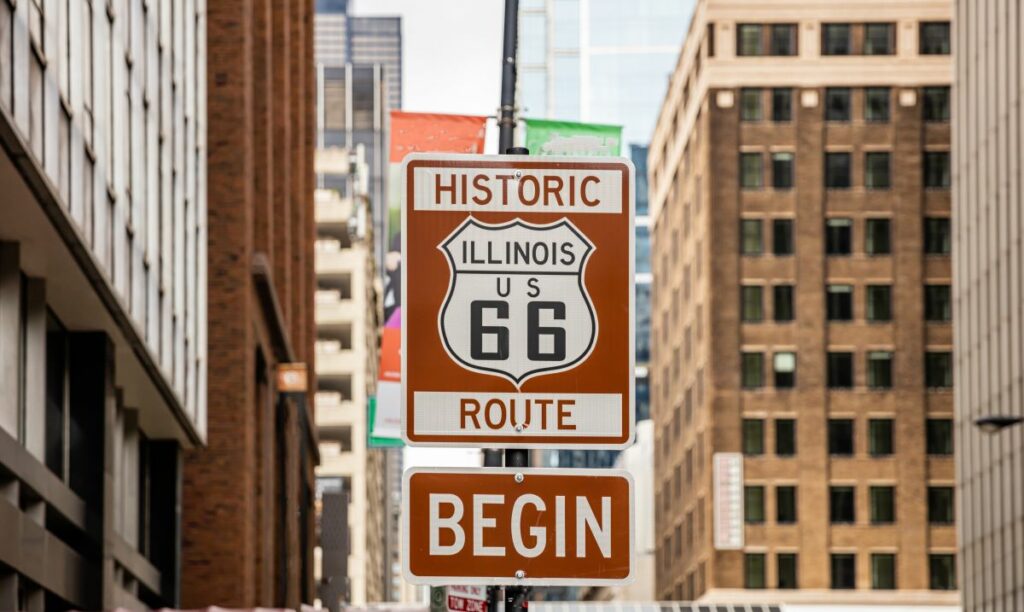
A Region by Any Other Name
Some of the earliest uses of the terms Midwest and Midwesterner occurred in the late 1800s. One definition of the region includes “Old Northwest” states of the Great Lakes region that were once part of the Northwest Ordinance. Later that definition grew to include states that were part of the Louisiana Purchase, including the Dakotas, Iowa, and Nebraska.
Today, the Midwest goes by many names. It is known as the Corn Belt, as parts of the region — such as Iowa — play a prominent role in the nation’s corn production. It’s also known as the “nation’s breadbasket” because it produces an abundance of oats, barley, and other crops.
In some circles, the Midwest is also called the “Heartland of America,” but this term and the states included in that description have continuously changed.
As it stands, the Midwest currently includes a grouping of cities with colorful nicknames, ranging from the Windy City, the Motor City, Paris of the Plains, Mad City, the Twin Cities, The City of Five Seasons, Indy, the Queen City, and Husker City.
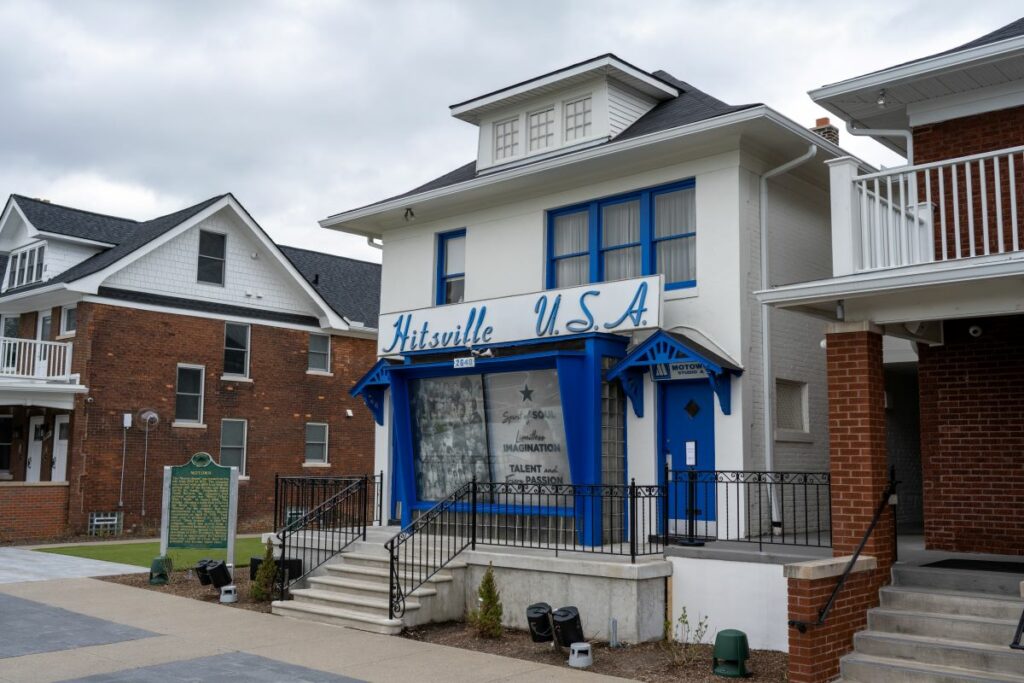
Explore The Very Best of the Midwest
Regardless of what or where you consider the Midwest to be, there’s no denying that the region is impressive.
Going by the U.S. Census Bureau’s definition of the Midwest, the 12-state region includes some of the nation’s most iconic landmarks, including the Gateway Arch, Mount Rushmore, the Great Lakes, the Wisconsin Delles, and the Badlands of South Dakota.
Explore the Midwest’s Best Museums
But the Midwest is also home to some of the nation’s best museums, including the Motown Museum, the Rock and Roll Hall of Fame, the Abraham Lincoln Presidential Library and Museum, the National Museum of Toys and Miniatures, The Henry Ford & Greenfield Village, the Art Institute of Chicago, and many more.
Cheer on Classic Midwest Sports Teams
Midwest sports fans have many options when making their allegiance to their favorite teams. The Midwest includes college teams from the Big Ten, Big 12, and Mid-American Conferences and over two dozen professional sports franchises including the Kansas City Chiefs, Chicago Bulls, Chicago Cubs, Green Bay Packers, Detroit Red Wings, Detroit Tigers, and Cincinnati Reds.
Explore the Wonders of the Midwest Outdoors
Outdoor enthusiasts love the Midwest too because it’s home to dozens of scenic national parks, including the Apostle Islands National Lakeshore, Badlands National Park, Theodore Roosevelt National Park, the headquarters of the Lewis and Clark National Historic Trail, Sleeping Bear Dunes National Lakeshore, and Indiana Dunes National Lakeshore.
In addition to landmarks and national parks, the scenic Midwest includes the Land of 10,000 lakes, the Great Lakes, the Mississippi River, the Ohio River, and the Missouri River among its major waterways.
Nosh on Classic Midwest Delicacies
Are you a foodie? Fear not, because the Midwest is packed with delicacies.
Whether you can’t get enough of deep-dish pizza, Italian beef, or hot dogs in Chicago, cheese curds in Wisconsin, Michigan pasties and Detroit coneys, BBQ in Kansas City, Juicy Lucys in Minneapolis, or even corn in Iowa, the region is full of flavor no matter where you go.
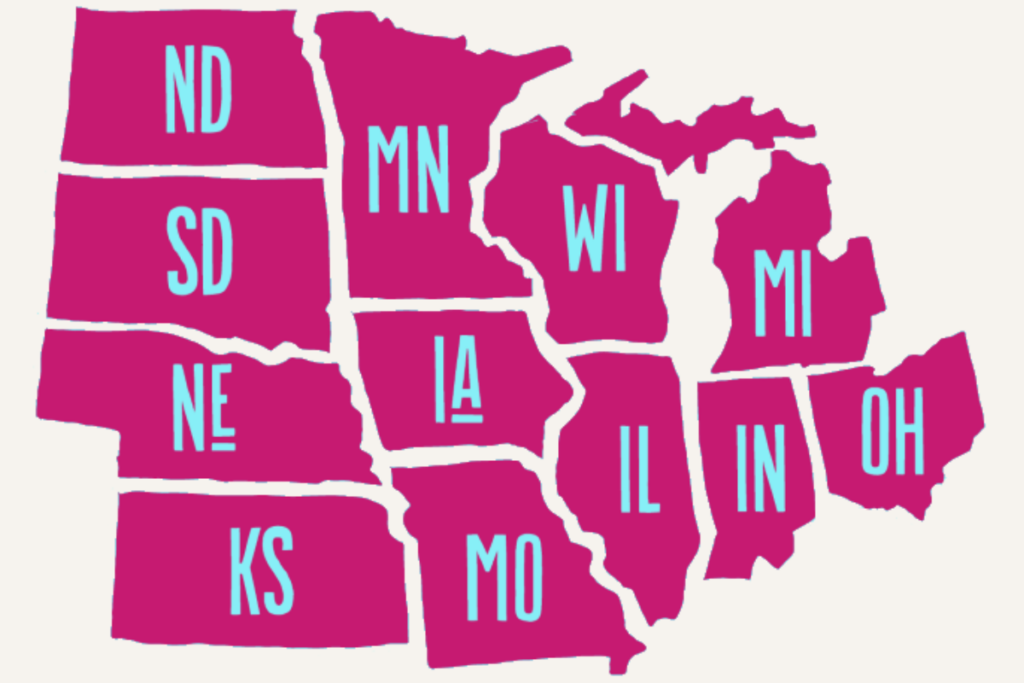
Embrace All of the Midwest (However You Define it)
There’s a lot to love about the Midwest — however you define it. From classic comfort foods to national landmarks to incredible scenery, every corner of the Midwest has something for everyone.
With a strong sense of community, diverse attractions, and a high quality of life, the Midwest is a testament to the enduring appeal of heartland America. If you already live there, you already know how appealing the Midwest is. But if you’re a first-time visitor, you’re in for a treat because the Midwest has much to offer.

